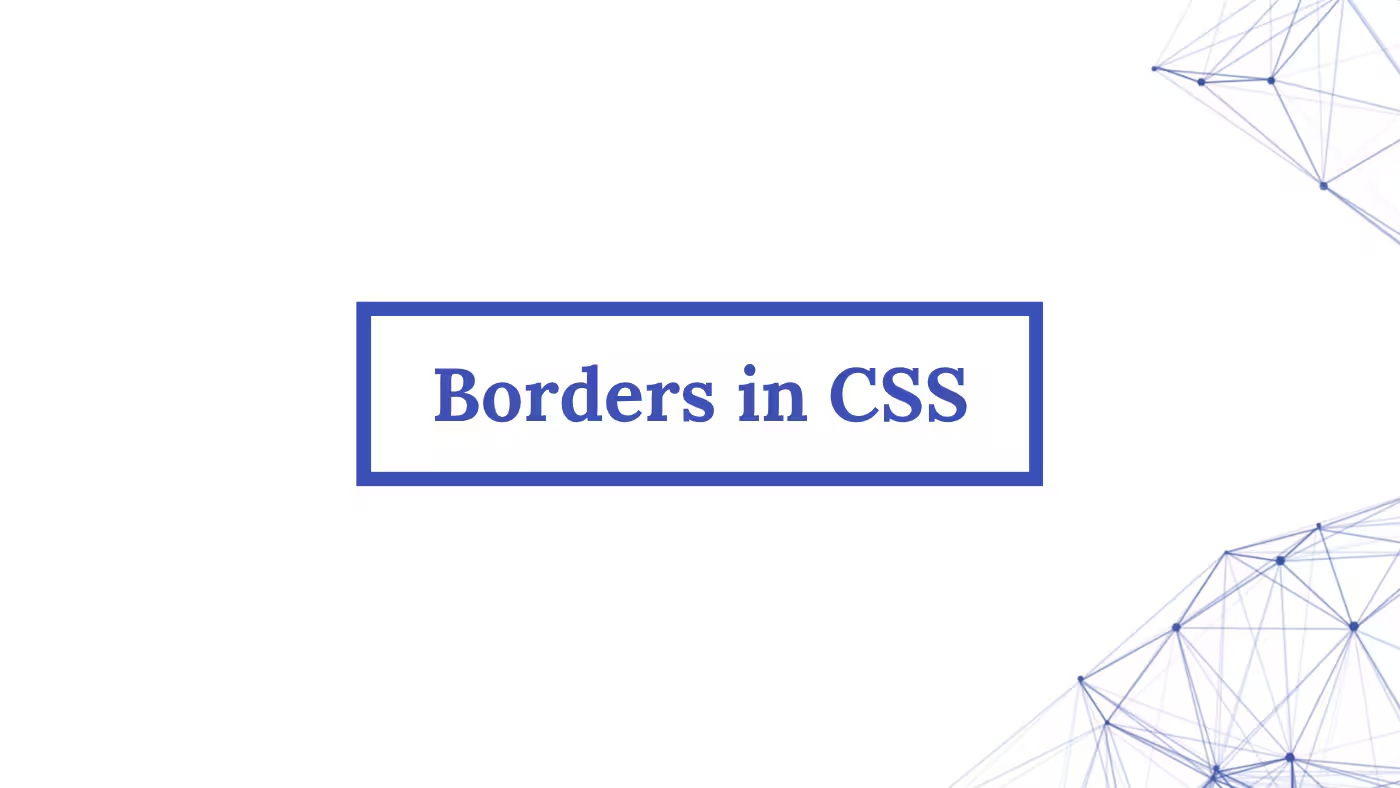- Published on
Combining border-top, border-right, border-left, border-bottom in CSS: A Complete Guide
- Authors

- Name
- Daniel Danielecki
- @ddanielecki

Table of Contents
Introduction
CSS border properties are fundamental to web design, allowing developers to create visual boundaries and enhance the user interface. While individual border properties like border-top, border-right, border-left, and border-bottom provide granular control, CSS shorthand properties offer a more efficient way to define borders. This comprehensive guide will show you how to combine these individual border properties into concise, maintainable CSS code.
Understanding Border Properties
Before diving into shorthand properties, let's understand the three main components of a border:
- Border Width: Defines the thickness of the border
- Border Style: Determines the appearance (solid, dashed, dotted, etc.)
- Border Color: Sets the color of the border
Each of these properties can be set individually or combined using shorthand properties.
Basic Border Shorthand
The most common way to set all borders at once is using the border shorthand property:
.element {
border: 1px solid black;
}
This single line is equivalent to:
.element {
border-width: 1px;
border-style: solid;
border-color: black;
}
Valid Border Styles
solid: A solid linedashed: A dashed linedotted: A dotted linedouble: Two solid linesgroove: A 3D grooved borderridge: A 3D ridged borderinset: A 3D inset borderoutset: A 3D outset bordernone: No borderhidden: Same asnone, but affects table border conflict resolution
Individual Border Properties
When you need different styles for each side, you can use individual properties:
.element {
border-top: 1px solid red;
border-right: 2px dashed blue;
border-bottom: 1px solid green;
border-left: 2px dashed purple;
}
Order of Properties
The order of values in border shorthand is important:
- Width
- Style
- Color
Advanced Border Techniques
Using Border-Width, Border-Style, and Border-Color
You can set all sides at once using the individual properties with multiple values:
.element {
border-width: 1px 2px 1px 2px; /* top right bottom left */
border-style: solid dashed solid dashed;
border-color: red blue green purple;
}
Combining with Border-Radius
.rounded-element {
border: 2px solid #333;
border-radius: 8px;
}
Creating Custom Border Effects
.custom-border {
border: 2px solid transparent;
background: linear-gradient(white, white) padding-box,
linear-gradient(45deg, #ff6b6b, #4ecdc4) border-box;
}
Common Use Cases
Card Components
Card components are a common UI pattern used to group related content. Here's how to create a clean, modern card with borders:
.card {
border: 1px solid #e2e8f0; /* Light gray border that works well in both light/dark modes */
border-radius: 8px; /* Rounded corners for a softer look */
padding: 1rem; /* Internal spacing */
box-shadow: 0 2px 4px rgba(0, 0, 0, 0.1); /* Subtle shadow for depth */
}
This creates a card with:
- A subtle border that's visible but not distracting
- Rounded corners for a modern look
- Proper padding to keep content away from the edges
- A light shadow to create depth and separation from the background
Alert Messages
Alert messages need to be noticeable but not overwhelming. Here's a common pattern for error alerts:
.alert {
border-left: 4px solid #f56565; /* Red accent on the left side */
padding: 1rem; /* Comfortable padding around the text */
background-color: #fff5f5; /* Light red background for emphasis */
}
This alert style:
- Uses a left border as a visual indicator of the alert type
- Has a contrasting background color to stand out
- Maintains readability with proper padding
- Is commonly used for error messages, warnings, or important notices
Buttons
Buttons need clear borders to indicate interactivity. Here's a modern button style:
.button {
border: 2px solid #4299e1; /* Blue border that matches the brand color */
border-radius: 4px; /* Slightly rounded corners */
padding: 0.5rem 1rem; /* Comfortable padding for text */
transition: all 0.2s; /* Smooth transition for hover effects */
}
.button:hover {
border-color: #2b6cb0; /* Darker blue on hover */
background-color: #ebf8ff; /* Light blue background on hover */
}
This button design:
- Uses a solid border to clearly define the clickable area
- Includes hover states for better interactivity
- Has smooth transitions for a polished feel
- Maintains consistency with the color scheme
Performance Considerations
- CSS Specificity: Using shorthand properties can affect CSS specificity
- Render Performance: Complex border styles may impact rendering performance
- Memory Usage: Multiple border declarations can increase CSS file size
Best Practices
Use Shorthand When Possible
/* Good: Concise and easier to maintain */ .element { border: 1px solid #000; } /* Avoid: Verbose and harder to maintain */ .element { border-width: 1px; border-style: solid; border-color: #000; }The shorthand version is:
- More concise and readable
- Easier to maintain
- Less prone to errors
- More performant (slightly smaller CSS file size)
Maintain Consistency
/* Consistent border style across components */ .card { border: 1px solid #e2e8f0; } .button { border: 1px solid #e2e8f0; }Benefits of consistent borders:
- Creates a cohesive design language
- Makes the UI more predictable
- Easier to maintain and update
- Better user experience
Consider Accessibility
/* High contrast borders for better visibility */ .important-element { border: 2px solid #000; /* Black border for maximum contrast */ }Accessibility considerations:
- Use sufficient contrast between border and background
- Consider color-blind users when using color-coded borders
- Ensure borders are visible enough for users with visual impairments
- Don't rely solely on borders to convey information
Use CSS Variables for Theming
:root { --border-color: #e2e8f0; /* Default border color */ --border-width: 1px; /* Default border width */ } .element { border: var(--border-width) solid var(--border-color); }Benefits of CSS variables:
- Easy theme switching
- Consistent values across components
- Simple dark/light mode implementation
- Centralized control of border styles
Browser Support
The border shorthand properties are supported in all modern browsers. For detailed browser support information, you can check the Can I Use database.
Key browser support milestones:
- Chrome: 1.0+ (2008)
- Firefox: 1.0+ (2004)
- Safari: 1.0+ (2003)
- Edge: 12.0+ (2015)
- Opera: 3.5+ (1998)
The border shorthand property has been a fundamental CSS feature since the early days of CSS2, making it one of the most widely supported CSS properties across all browsers.
Troubleshooting Common Issues
Border Not Showing
/* Problem: Border might not be visible */
.element { border: 0; } /* Border width is set to 0 */
/* Solution: Set explicit border properties */
.element { border: 1px solid #000; } /* Visible black border */
Common causes:
- Border width set to 0
- Border color matching the background
- Border style set to
none - Element being covered by another element
Inconsistent Border Rendering
/* Problem: Border might render differently across browsers */
.element { border: 1px solid; } /* Missing color value */
/* Solution: Always specify all border properties */
.element { border: 1px solid #000; } /* Complete border declaration */
Why this happens:
- Different browsers have different default colors
- Missing properties can cause unexpected behavior
- Incomplete declarations can lead to inconsistent rendering
- Always specify all border properties for consistency
Border Overlap Issues
/* Problem: Negative margin can cause border overlap */
.element {
border: 1px solid #000;
margin: -1px; /* Negative margin can cause overlap */
}
/* Solution: Use proper spacing */
.element {
border: 1px solid #000;
margin: 0; /* No negative margin */
}
Common issues:
- Negative margins causing border overlap
- Adjacent elements with borders creating double borders
- Box-sizing issues affecting border placement
- Z-index conflicts with overlapping elements
Conclusion
Mastering CSS border shorthand properties is essential for writing efficient and maintainable CSS code. Whether you're creating simple borders or complex border patterns, understanding these properties will help you:
- Write more concise CSS code
- Maintain consistent styling across your application
- Create visually appealing user interfaces
- Optimize performance and maintainability
Remember that while shorthand properties are convenient, sometimes using individual properties can make your code more explicit and easier to maintain, especially when dealing with complex border patterns.